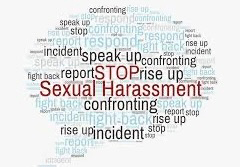Creating a Gender-Inclusive Sexual Harassment Training Program
Designing a sexual harassment training program that is inclusive of all genders is essential to creating a safe, respectful, and equitable workplace. Such a program should ensure that everyone, regardless of their gender, feels valued and protected from harassment. Below are key elements to consider when developing a comprehensive and inclusive sexual harassment training program:
1. Acknowledge Varied Experiences
Recognize that sexual harassment affects individuals of all gender identities and expressions. Tailor training materials and scenarios to reflect these diverse experiences. This ensures that the program educates participants on all forms of harassment, from verbal and physical abuse to inappropriate behavior, recognizing the different ways harassment can manifest for different genders.
2. Define and Discuss Consent
A clear and thorough discussion on consent is foundational. Define consent in all contexts—emphasizing that it must be clear, voluntary, and enthusiastic. Ensure that the concept of consent is inclusive, not just within romantic or sexual interactions, but in all professional situations. Everyone, irrespective of their gender, must understand and respect boundaries in all interactions.
3. Address Power Imbalances
Discuss the impact of power dynamics in the workplace, especially between supervisors and subordinates. It’s important to highlight how these imbalances can contribute to harassment. Equip employees with the knowledge to recognize and address situations where power is misused, creating a workplace where everyone feels empowered to report and challenge inappropriate behavior.
4. Encourage Bystander Intervention
Training should empower employees to act as active bystanders. Teach individuals how to safely intervene when they witness inappropriate behavior. By providing specific techniques for bystander intervention, employees can feel more confident and capable of standing up for others and creating a safer environment for all.
5. Ensure Clear Reporting Mechanisms
A safe, transparent, and confidential reporting system is critical for ensuring that employees feel comfortable coming forward when they experience or witness harassment. The reporting process should be easy to navigate and accessible for all employees, regardless of gender. Employees should be confident that they will be treated with respect and that their concerns will be taken seriously without fear of retaliation.
6. Offer Support and Resources
Provide employees with information on the resources available to them, both within and outside the organization. This could include counseling, legal assistance, and support services that help individuals navigate the aftermath of harassment. Having clear access to support ensures employees know they’re not alone and that help is available if needed.
7. Promote a Culture of Respect and Inclusivity
Create a culture in which all employees understand the importance of respect, dignity, and inclusivity in the workplace. Encourage open communication, active listening, and empathy. A work environment that values respect will naturally reduce the likelihood of harassment and create a space where everyone feels supported.
8. Evaluate and Improve Continuously
To ensure the program remains relevant and impactful, regularly evaluate its effectiveness. Gather feedback from employees and use that input to make adjustments and improvements. This approach will keep the training program aligned with the needs of the workplace and evolving social norms.
Gender-Inclusive Interventions
It’s important to remember that PoSH (Prevention of Sexual Harassment) training should not create divisions or place blame on one gender. A truly inclusive program acknowledges the experiences of all genders and focuses on fostering mutual respect, understanding, and accountability. By implementing gender-neutral training that does not vilify any group, organizations can create a safer and more balanced approach to addressing harassment.
Creating a truly inclusive sexual harassment training program not only helps prevent misconduct but also builds a more harmonious, respectful, and productive workplace for all employees.
#PoshTraining #WorkplaceCulture #SexualHarassmentPrevention #InclusiveWorkplace #EmployeeSafety #HumanResources #DiversityAndInclusion #GenderEquality #TrainingProgram


